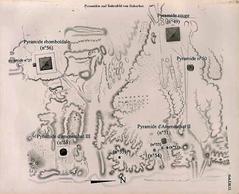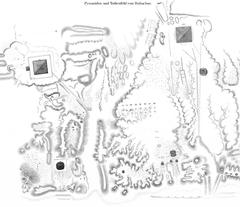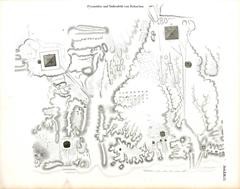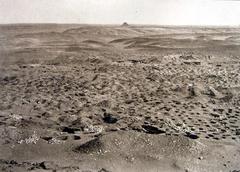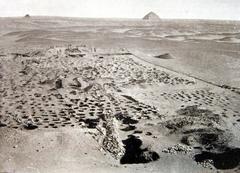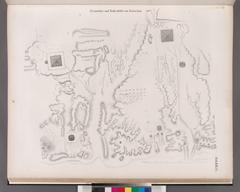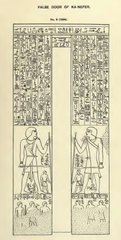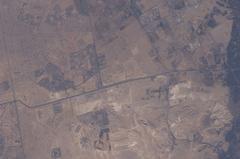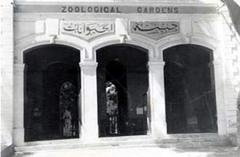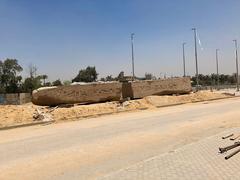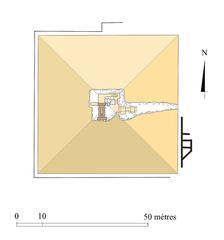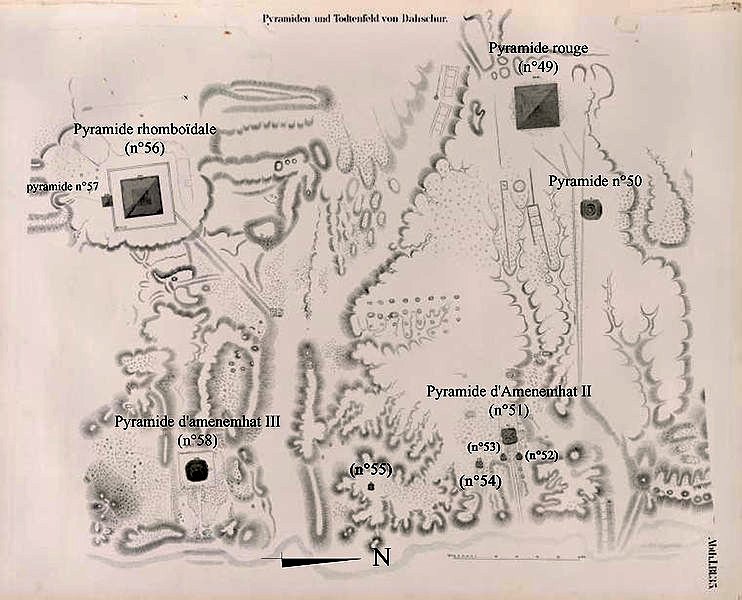
Dahshur Visiting Guide: Tickets, Hours, and Attractions in Giza, Egypt
Date: 14/06/2025
Introduction to Dahshur: Egypt’s Hidden Pyramid Legacy
Located approximately 35 to 40 kilometers south of Cairo in Egypt’s Giza Governorate, Dahshur is a captivating archaeological site that provides a rare window into the origins and evolution of ancient Egyptian pyramid architecture. Often overshadowed by the more famous Giza Plateau, Dahshur’s royal necropolis is home to some of the earliest and most significant pyramids—most notably the Bent Pyramid and the Red Pyramid, both masterpieces from the reign of Pharaoh Sneferu in the 4th Dynasty (c. 2613–2589 BCE). These monuments mark a pivotal transition from step-sided to smooth-sided pyramids, reflecting centuries of architectural innovation that ultimately culminated in the iconic Great Pyramid of Khufu at Giza.
Dahshur also houses later Middle Kingdom pyramids, such as the Black Pyramid of Amenemhat III, illustrating the necropolis’s continued royal importance across the ages. With ongoing archaeological research unveiling new discoveries, Dahshur offers visitors not only an immersive historical experience but also a tranquil alternative to Egypt’s busier tourist sites. This guide provides essential information on Dahshur’s visiting hours, ticket pricing, transportation, accessibility, and travel tips, ensuring you are well-prepared to explore one of Egypt’s most remarkable heritage sites.
For up-to-date details, consult trusted resources such as Wikivoyage, Map for Tourist, and Audiala.
Contents
- Introduction
- Historical Background
- The Royal Necropolis of Memphis
- Sneferu’s Innovations
- The Main Pyramids of Dahshur
- The Bent Pyramid
- The Red Pyramid
- The Black Pyramid and Middle Kingdom Developments
- Visitor Information
- Visiting Hours and Ticketing
- Accessibility and Travel Tips
- Transportation Options
- Facilities and Amenities
- Guided and Independent Visits
- Archaeological Discoveries and Preservation
- Frequently Asked Questions (FAQ)
- Conclusion and Resources
Historical Background
The Royal Necropolis of Memphis
Dahshur forms a key part of the vast necropolis of ancient Memphis, serving as an elite burial ground for pharaohs and high officials during the Old and Middle Kingdoms (wikivoyage; map-for-tourist.com). This site offers a unique perspective on the evolution of Egyptian funerary architecture and religious practices over millennia (topoi.org).
Sneferu’s Architectural Revolution
The transformative reign of Pharaoh Sneferu marked Dahshur’s golden age. Seeking perfection of the royal tomb, Sneferu ordered the construction of both the Bent Pyramid and the Red Pyramid, facilitating the leap from step-sided to true smooth-sided pyramids (ancientpedia.com; wonders-of-the-world.net). These innovations directly influenced subsequent pyramid construction, including the Great Pyramid at Giza (architecturecompetitions.com).
The Main Pyramids of Dahshur
The Bent Pyramid
The Bent Pyramid is instantly recognizable due to its noticeable change in angle—rising at a steep 54 degrees before shifting to a shallower 43 degrees midway up (architecturecompetitions.com; egyptmythology.com). This design reflects ancient engineers’ attempts to solve structural challenges and avoid collapse. The pyramid retains much of its original limestone casing, offering rare insight into the original appearance of Egyptian pyramids (facts.net).
Visitors can enter the Bent Pyramid’s interior—a unique privilege among Egyptian pyramids—exploring passageways and chambers that highlight ancient construction techniques (historytools.org).
The Red Pyramid
The Red Pyramid, just north of the Bent Pyramid, is considered Egypt’s first successful smooth-sided pyramid. Standing at 104 meters (341 feet), it set the standard for later pyramid construction, including Khufu’s masterpiece at Giza (ancientpedia.com). Its reddish limestone core gives the monument its name. Inside, a narrow passage leads to three impressive chambers with corbelled ceilings (historytools.org; audiala.com).
The Black Pyramid and Middle Kingdom Developments
The Black Pyramid, built by Amenemhat III during the Middle Kingdom, represents a later phase of pyramid construction. Built mainly with mudbrick and clay, it has largely collapsed, but remains significant for its historical context (facts.net). Other Middle Kingdom pyramids, such as those of Senusret III and Amenemhat II, are present as mounds or ruins, reflecting Dahshur’s sustained royal significance (egypt-uncovered.com).
Visitor Information
Visiting Hours and Ticketing
- Opening Hours: Dahshur is typically open daily from 8:00 AM to 4:00 or 5:00 PM, though hours may adjust seasonally. Always verify current hours before your visit (egipto.com).
- Ticket Prices: As of June 2025, entry costs approximately 300 EGP for adults, 150 EGP for students (with ID), and children under 12 receive a discount (nileempire.com). Tickets cover both the Bent and Red Pyramids and allow interior access.
- Payment: Credit cards are widely accepted for ticket purchases; cash is rarely accepted at major sites. Consider booking online during peak tourist seasons (egypttailormade.net).
Accessibility and Travel Tips
- The site’s terrain is sandy and uneven; comfortable walking shoes are essential.
- Pyramid interiors involve steep, narrow passages requiring stooping or crouching—these are not wheelchair accessible.
- Bring sun protection (hat, sunscreen, sunglasses) and water, as there is minimal shade and no on-site food services (nitsaholidays.in).
- Early mornings or late afternoons are best for avoiding heat and crowds and for optimal photography lighting (audiala.com).
Transportation Options
- Private Car/Taxi: The most convenient way to reach Dahshur; expect a 45-minute to 1-hour drive from Cairo. Ride-hailing apps like Uber and Careem are available, but confirm your return trip (egipto.com).
- Guided Tours: Many agencies offer tours combining Dahshur with Saqqara and Memphis, including transportation and a licensed guide (traveltoegypt.net).
- Public Transport: Not recommended, as the nearest bus stops are several kilometers from the site.
Facilities and Amenities
- Restrooms: Basic facilities are available near the ticket office.
- No on-site cafés or restaurants: Bring your own snacks and water.
- Souvenirs: Limited vendors at the entrance; selection is modest compared to Giza or Saqqara.
- No accommodation: Most visitors stay in Cairo or Giza and visit Dahshur as a half-day excursion (blog.travelhackfun.com).
Guided and Independent Visits
- Guided Tours: Strongly recommended for historical context and managing interactions with unofficial vendors (blog.travelhackfun.com).
- Independent Visits: Possible, but expect solicitation from unofficial guides; bring a downloaded guidebook or audio guide for context.
Archaeological Discoveries and Preservation
Dahshur is an active archaeological site, with ongoing excavations revealing tombs, artifacts, and inscriptions that shed light on ancient Egyptian society, administration, and beliefs (facts.net; topoi.org). Conservation efforts are underway to protect pyramids from environmental threats such as erosion, groundwater, and agricultural encroachment. Visitors are asked not to climb on the monuments to help preserve them for future generations.
Frequently Asked Questions (FAQ)
Q: What are Dahshur’s visiting hours?
A: Generally open from 8:00 AM to 4:00 or 5:00 PM daily, but confirm before your visit.
Q: How much do tickets cost?
A: Approximately 300 EGP for adults, 150 EGP for students; children under 12 receive discounts.
Q: Are the pyramids accessible to people with disabilities?
A: The sandy terrain and steep, narrow interiors make access challenging for visitors with mobility issues.
Q: How do I get to Dahshur from Cairo?
A: By private car, taxi, or guided tour; the journey takes 45 minutes to an hour.
Q: Can I enter the pyramids?
A: Yes, interior access to the Bent and Red Pyramids is included with your ticket.
Q: Are guided tours available?
A: Yes, and they are highly recommended for a richer understanding of the site.
Conclusion
Dahshur stands as a testament to ancient Egypt’s architectural ingenuity and royal heritage. With its less-crowded pyramids, affordable tickets, and accessible location near Cairo, Dahshur is an essential stop for travelers seeking to experience authentic ancient wonders away from the crowds. Prepare for your visit by checking current hours, booking tickets, arranging transportation, and packing appropriately for a rewarding journey through one of Egypt’s most extraordinary archaeological landscapes.
For more updates, travel tips, and exclusive guided content, download the Audiala app and follow us on social media.
